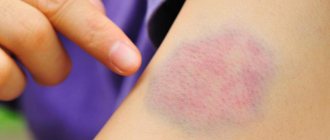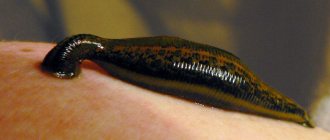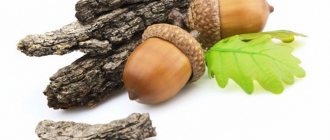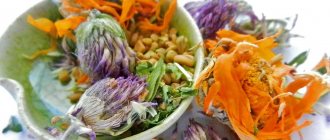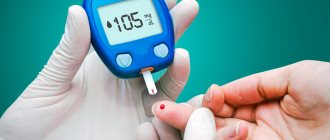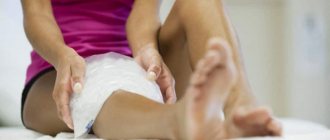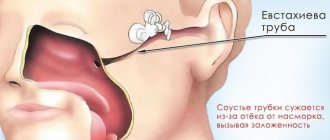Neuralgia is a disease that can affect different parts of the body with its location, affecting the peripheral nerve, plexus and vessels of the nerves, pressing on them with surrounding tissues, resulting in severe pain in intensity. It is important to know that this pain has virtually no effect on the sensitivity and mobility of the affected area; otherwise, it is already a manifestation of another disease, such as neuritis, which are often confused with each other.
The problem is gaining considerable momentum in terms of relevance, so many people are interested in how to get rid of neuralgia at home and is it even possible? It is possible if you pay timely attention to the presence and development of the disease, and provide proper help and support to your own body.
Absolutely any nerve in the structure of the human body is at risk, but there is a group that is most often susceptible to attack by this disease:
- dorsal;
- facial or trigeminal;
- sciatic;
- occipital;
- glossopharyngeal nerve.
Causes of neuralgia
The reasons depend on which area has succumbed to the disease; for each type they are characteristic and individual, so let’s find out what causes neuralgia depending on the location of the lesion.
Sciatic nerve
- Identical causes of development provoke spinal neuralgia.
- Pregnancy with significant weight gain (more than 20 kg);
- Infections and inflammations in the pelvic organs, as well as their hypothermia;
- Excessive load on the lower back;
- Physical inactivity (inactivity);
- Overweight;
- Osteochondrosis (damage and sometimes displacement of tissues and cartilage of the vertebral discs);
- Fractures in the pelvis or hips;
- Tumors at the location of the nerve;
- Intervertebral hernia.
Occipital nerve
- Exposing the back of the head to hypothermia;
- Gout (a metabolic disorder that leads to the accumulation of salt deposits in the joints);
- Tumors of any nature or moderate to severe injuries on the cervical vertebrae and areas near them;
- Osteochondrosis.
Facial nerve
- Arterial aneurysm (dilation and accumulation of blood vessels in the form of sacs in the arteries leading to the brain, the diameter of the artery increases, and blood circulation in it slows down);
- Atherosclerosis (blockage and hardening of blood vessels that form fatty tissue around them, lose their elasticity and block the flow of blood to the organ);
- Brain tumors, both benign and malignant;
- Protracted infections that become chronic, as well as purulent inflammation (for example: sinusitis, pulpitis, caries...);
- Hypothermia of any part of the face.
Glossopharyngeal nerve
- Infectious diseases (tuberculosis, pneumonia, influenza...);
- Long-term allergic manifestations;
- Intoxication, exhaustion of the body;
- Violation of general metabolism;
- Diabetes;
- Alcohol abuse;
- Sclerosis (hardening and damage to the nervous system and internal organs).
Symptoms of neuralgia
Signs are also individual for any type. To correctly diagnose a disease, you need to clearly understand its symptoms, and ideally have a doctor’s confirmation of the diagnosis. Only in this case can one ask questions about how to treat neurology in general and avoid its relapse in the future. Let's look at the most pronounced symptoms that will help confirm or dispel your suspicions.
Sciatic neuralgia
- The pain spreads throughout the nerve and feels paroxysmal and shooting.
- Discomfort is felt in one specific part, without going beyond it.
- A burning sensation may occur in the buttocks and lower back.
- There is a feeling that small goosebumps are crawling over the sore spot, especially during sleep, when the body is in a relaxed state.
Glossopharyngeal neuralgia
- A painful sensation on the base of the tongue, in the pharynx and tonsils that occurs during eating, yawning, and coughing.
- Increased production of saliva alternates with absolute dryness of the oral cavity.
- Bitter taste in the mouth when eating any food, even sweets.
Occipital neuralgia
- Sudden, sharp attacks of pain when turning the neck or even lightly scratching the circumference of the head.
- Severe pain, reminiscent of a lumbago behind the ears, on the back of the head, as well as on the entire back of the neck.
- Typically, one part is affected, the side of the neck and head, but in rare cases both sides are affected.
Facial neuralgia
- Excessive sensitivity of the skin on the face.
- Attacks of pain are sharp, but short-lived, often go away on their own, lasting from 10 seconds to several minutes, but up to three hundred such pain attacks can occur per day.
- Mostly the area of the face on the right side hurts; very rarely pain can occur on both sides.
- A painful attack can begin suddenly when some physical object is applied to certain points of the face: the wings of the nose, the nasolabial fold, the corners of the eyes. This can happen involuntarily while shaving, applying makeup, as well as while eating or chewing. This type of pain is called trigeminal neuralgia.
Intercostal, spinal neuralgia
- The attack appears spontaneously with intense coughing, a rapid change of position or a deep breath.
- The pain is of a girdling nature and can last for a very long time, from 2-3 hours to three days.
- In the affected, painful part, the sensitivity of the skin almost always decreases, and in some cases it may even disappear altogether.
Symptoms of intercostal neuralgia
The main clinical sign of the disease is pain, which spreads along the affected nerve. It can have different intensity, from sharp, strong and acute, to constant, aching.
The pain intensifies when laughing, taking a deep breath, sneezing and coughing . Often, to relieve pain, the patient takes a forced position, leaning towards the affected side.
When the nerve is damaged on the left, the pain often resembles the symptoms of angina pectoris . Patients complain of a burning pain that radiates to the spine, shoulder blade, and left arm. However, with angina pectoris, the nature of the pain does not depend on coughing, sneezing, or movement, and the pain quickly disappears after taking nitroglycerin.
However, if the pain is of this nature, the patient is prescribed an ECG in order to finally exclude CVD diseases. It is very important not to confuse intercostal neuralgia with myocardial infarction. The fact is that during a heart attack, nitroglycerin also does not help get rid of pain.
Therefore, you should not tempt fate and endure. If you experience any sudden severe pain in the heart area, you should immediately consult a doctor and undergo an examination.
When the nerves of the lower ribs are affected, pain due to neuralgia can be confused with renal colic . In both cases, sudden, cramping, severe pain appears in the lower back, which radiates to the groin or leg.
In this case, it is also necessary to immediately seek help from specialists . In addition to the above diseases, intercostal neuralgia can masquerade as diseases such as mediastinal tumors, narrowing of the thoracic aorta, and pleurisy.
Folk remedies for neuralgia
The pain associated with this disease is very debilitating, analgesics do not act effectively and relieve pain only for a short time, and at some point they stop working altogether, causing addiction to the main substance of the drug. Therefore, information on how to treat neuralgia at home remains popular and in demand.
Willow
An effective recipe for the treatment of pain in the back and vertebrae. You need to finely chop the willow bark and boil it under a closed lid for 20 minutes, after cooling, strain and use 1 tbsp internally. three times a day.
indoor geranium
Place several freshly picked leaves of the plant on a cloth, preferably natural one made of flax or other material, and apply it as a compress to the sore spot, apply a bandage over it and wrap it in something warm for two hours, repeat daily every 2-4 hours.
DIY ointment
Boil the lilac buds until the broth becomes thick, strain and combine with fresh pork fat, stir until the consistency of an ointment and rub into the area of pain as needed throughout the day. Store in a cool place or refrigerator.
Garlic oil
You will need pharmaceutical, ready-made oil; you need to make a tincture from it. Pour a tablespoon of oil into 0.5 liters of vodka or cognac, stir until completely combined and dissolved. Lubricate the affected areas no more than 3 times in 24 hours, the duration of treatment varies individually.
Horseradish
Both the root and leaves are used to relieve pain. Grate the root on a fine grater and apply a compress to the area; a horseradish leaf is used in the same way, only in its entirety, well washed under running water, tie the top with cellophane or an elastic bandage and wrap it in a woolen scarf. Keep it on until you feel a noticeable burning sensation, rinse off any remaining residue. Repeat no more than four times in 10 days.
Radish
Pass the black radish through a meat grinder or squeeze out the juice using another method and rub it fresh over the entire diseased nerve. It is enough to do it once a day for two weeks.
Tincture
Mix 100 grams of alcohol and 10 grams of common thyme herb and leave for a day. Take fifteen drops three times a day, at the moments when you experience the most acute pain.
Mixture No1
Mix 0.5 liters of liquid honey with the same amount of lemons, grated together with the peel and seeds, and add 40 grams of peeled apricot kernels, stir until smooth. Eat 2 teaspoons every morning and evening (only if you are not overweight) for 1.5 months.
Mixture No2
Grind the zest from one large lemon with 30 grams of dry lemon balm leaves, 50 grams of black currant leaves and 600 milliliters of water (boiling water), leave for an hour, filter and consume 70 ml twice, no less than 8 hours after the previous dose, thirty minutes. before meals.
Effective home treatment for intercostal neuralgia
Have you been trying to heal your JOINTS for many years?
Head of the Institute for Joint Treatment: “You will be amazed at how easy it is to heal your joints by taking every day...
Read more "
The main symptom of intercostal neuralgia (pinched nerves in narrow bone canals) is pain. Pain in the chest area at rest may not bother you; it intensifies with changes in body position, inhalation and exhalation, coughing, laughter, etc. The pain is inconsistent at first, pulling, burning and aching unpleasant sensations appear only periodically. As the process becomes chronic, the pain becomes continuous and can only be relieved with painkillers. The nature of the pain with intercostal neuralgia is similar to the pain of a heart attack. The only difference is that when taking cardiac medications (nitroglycerin, validol) it does not decrease. To determine the cause of the pain, you need to see a doctor.
Complex treatment for intercostal neuralgia combines the use of traditional and non-traditional methods, namely: taking medications, manual therapy, physiotherapy, massage, physical therapy and folk remedies. The traditional treatment regimen is prescribed by a doctor who is a specialist in the field of neurological diseases, and you can search for traditional medicine recipes for treating intercostal neuralgia at home on your own. Important point: before using any home method, you must consult your doctor!
Principles of treatment
All therapeutic measures are aimed at eliminating pain and inflammation, as well as restoring the conductive functions of the nervous system in the affected area.
During the acute period, it is recommended to maintain bed rest, limit physical activity to a minimum, avoid drafts and hypothermia, keep the sore spot warm and strictly follow all doctor’s prescriptions.
It is necessary to treat intercostal neuralgia in a timely manner to prevent the development of complications. In this case, the use of folk remedies and methods will be a good help for the drug therapy prescribed by the doctor.
Review of the most popular folk recipes for treatment at home
Compresses, lotions and applications
Technique for applying compresses (lotions): moisten a natural fabric in the medicine, apply it to the sore spot, cover it with polyethylene and insulate it with a layer of cotton wool. Attach the bandage securely to the body. The duration of the procedure depends on the biological activity of the drug used.
- 50 gr. Dissolve sea salt in 500 ml. hot water. Keep the compress for 2-3 hours;
- 500 ml. vodka and 50-70 gr., young birch buds. Duration 20-30 minutes;
- 200 ml. alcohol 70%, 2 tbsp. l. rue herb powder. Time – 30 minutes;
- Wrap the steamed seeds in gauze and keep on the affected area until cool;
- Applications made from fresh burdock leaves can be left overnight, and from leaves of indoor geranium or wormwood - for 2 hours;
- Chop the leaves of the American agave with a knife, wrap the resulting juice in a cloth and apply to the sore spot. If redness and burning occur, remove the application and lubricate the skin with sour cream. After some time, the procedure can be repeated;
- Mix warm melted beeswax, liquid honey, onion juice and white lily bulbs into a homogeneous mass, form a cake and apply to the painful area under a warm cloth overnight.
Judging by the reviews of patients, many of them warm up the sore spot with hot halves of a hard-boiled egg or apply a hot flatbread of boiled, crushed potatoes. They say that after application there is immediate relief.
But these treatment methods have a downside to their positive effect - swelling at the site of inflammation increases, and soon the pain returns, so the treatment process becomes more difficult. To warm up, you need to use dry heat - woolen or down shawls, scarves.
Rubs and ointments
- Rub in black radish juice, horseradish or turpentine. These medications have a local irritant, analgesic and warming effect;
- Ointment made from crushed leaves and buds of lilac and melted hot lard in a ratio of 4:1;
- Ground aspen buds (1 part) and butter (4 parts);
- Rubbing from alcohol tincture of arnica flowers;
- A mixture of iodine and glycerin in equal proportions for lubrication. You need to treat the entire back and chest in front, paying special attention to painful areas. Do not rub the spine area! After the procedure, put on warm clothes and lie in bed.
After applying the ointment or rubbing, be sure to wrap the treated area with something warm!
Baths
Treatment of intercostal neuralgia in this way is perhaps the most pleasant. The water should be at a comfortable temperature for the body, the duration of the water procedure is 20-30 minutes. While taking a bath, do not allow the water to cool down and cold air to enter the room where the patient is. Afterwards, it is recommended to apply dry heat to the site of inflammation and stay in bed for some time.
- Mix lavender essential oil (a few drops) with 25 g. honey and 50 gr. milk, dissolve in water. Add 3-4 drops of eucalyptus oil there;
- A decoction of aspen bark added to the bath perfectly relieves pain and muscle tension;
- Aspen and oatmeal in the form of a decoction for evening relaxing water treatments. After taking a bath, you need to rub fir oil into the sore spot.
Herbal preparations for internal use
- Crushed willow bark (1 tsp) per glass of boiling water. Simmer in a water bath for 20 minutes. Take a tablespoon 4 times a day;
- Prepare a decoction of peppermint leaves according to the attached instructions and drink half a glass in the morning and evening;
- Easy to prepare and at the same time effective infusion of immortelle: 2 tbsp. l. herbs per half liter of boiling water. Infuse in a thermos for a day, strain and drink the entire prepared volume in a day;
- Chamomile flowers in the amount of 70 g. pour a glass of boiling water and boil for 5 minutes. Drink a quarter glass after each meal;
- Very tasty remedy: 3 tbsp. spoons of apricot kernels (chopped), 500 gr. Mix grated lemons with peel and half a kilo of warm honey, rubbing the mass thoroughly. Eat a tablespoon 2 times a day (morning and evening). The course of treatment is 1 month.
Note: it is important to understand the difference between infusion, tincture and decoction! Infusion - a medicinal plant is infused for a certain time in water in a warm place, tincture is almost the same, but in alcohol, and a decoction is when the herb is boiled in water in a steam or water bath.
Additional treatments and preventive measures
At home, anyone can use a pepper patch or a warm heating pad for treatment. If it is possible to wear a special support corset with a therapeutic effect, then do not neglect it.
- You can periodically place medical cups on your back.
- It is advisable to perform a set of special exercises every morning.
- When staying in a monotonous position for a long time, for example, working at a computer, take warm-up breaks every hour.
- Constantly monitor your posture, keep your back straight.
- It is recommended to regularly use orthopedic furniture, mattress and pillow.
- If possible, avoid nervous and physical stress.
- Monitor your health and promptly treat spinal diseases.
And in conclusion, I would like to say that only an integrated approach to treatment will be truly effective. Drug therapy is not as effective unless additional folk remedies are used. In turn, treatment at home without the use of medications and physical procedures will also be an “empty phrase.” This interdependence is the key to successful recovery from neurological pathology.
Comments
Victor – 10.29.2015 – 10:39
- answer
- answer
Guest 2 – 10/30/2016 – 21:25
- answer
- answer
Add a comment
- My spina.ru © 2012—2019. Copying of materials is possible only with a link to this site. ATTENTION! All information on this site is for reference or popular information only. Diagnosis and prescription of medications require knowledge of the medical history and examination by a physician. Therefore, we strongly recommend that you consult a doctor regarding treatment and diagnosis, and not self-medicate. User AgreementAdvertisers
Neuralgia - herbs, treatment
Herbalists consider traditional medicine to be very effective in combating neurological problems.
After all, such therapy can have a therapeutic, pain-relieving effect for a long time compared to drug therapy, which is contraindicated for long-term use. Mint
The plant is known for its calming and relaxing effects not only on the central nervous system, but also on all nerve endings in general. Boil 15 grams of dried mint in a glass of boiling water for about 8-10 minutes. Drink one hundred milliliters in the morning and at night.
Birch buds
It is very important to know that the buds are needed to bloom only halfway, so a handful of raw materials is poured with half a liter of vodka or concentrated alcohol; you can use it immediately after dilution in the form of rubbing sore spots or compresses; for the second case, the tincture needs to be diluted with a little water so as not to provoke burnt Do the procedures daily, but not longer than 15 days.
Yarrow
1 tbsp. combine herbs with 250 ml of boiled or thawed water, boil for 5 minutes over high heat, filter and use for pain three to five times a day, regardless of meals.
Aspen
Will be used for treatment in the form of baths. Boil the bark of young aspen in two liters of water, take enough raw material to form a concentrated decoction, pour it into a bath with main water and steam in this solution for ten minutes. Repeat the procedure every evening an hour and a half before bedtime until you feel relief.
Chamomile
Chamomile tea can generally be considered one of the most healing drinks; in the case of neuralgia, it is also very effective. You just need to pour boiling water over a handful of flowers, let it sit and drink 0.5 cups before meals 3 times every 12 hours.
Collection of herbs
Mix coltsfoot herbs, wormwood and birch leaves in equal proportions, pour 30 ml of kefir or whey into the mixture, grind everything into a paste and apply as a compress, immediately put the product on a bandage, then on the affected part of the body, wrap it with a cloth or secure it bandage, and sleep under a warm blanket. In the morning, wash off the remaining compress with soapy water. Repeat every three to four days until you feel better.
Treatment at home
Geranium
Geranium
Herbal collection
Chamomile and mint
Black radish
Black radish
Pain relief is only the first stage in the treatment of intercostal neuralgia. To obtain a stable result and guarantee against the return of attacks, a long course of treatment is required. This can be done using folk remedies, but only if the doctor has confirmed the diagnosis.
If the patient is not sure of the origin of the pain, the use of any means can be harmful. In addition, time will be lost to begin proper treatment.
The main problem in using folk remedies is the duration of the course. It is necessary to continue the procedures for a long time; stopping halfway will not bring results, and may even worsen the condition.
Glycerin and iodine
- Glycerin is mixed with iodine in a 1:1 ratio.
- The mixture is poured into a dark glass container (to protect it from exposure to light) and shaken thoroughly - the ingredients should be well mixed.
- Using a cotton swab, apply the product to the painful area of the back, carefully avoiding the spine area. You need to lubricate the skin with light movements, without rubbing the mixture, as this can cause a burn. Apply a loose bandage on top or simply wear underwear made from natural fabrics (not synthetics).
Iodine warms up the muscles well and relieves pain, but you need to make sure that the patient does not get caught in a random draft or make sudden movements - this can worsen the situation. It is recommended to perform the procedure before bedtime, so that you can immediately go to bed and cover yourself warmly. The course of application is 12-15 sessions with an interval of one day.
You can collect the buds yourself (if it’s spring outside) or purchase them at the pharmacy.
- pour a handful of buds with vodka (0.5 l);
- leave for ten days in a cool, dark place.
It is better to rub the affected area with birch bud tincture in the evening. The product can be used during the day if the patient does not intend to leave the house. Be sure to wrap up the mashed area or dress warmly.
Freshly squeezed juice is rubbed into the back in the direction from the spinal column (the spine itself is not affected). This product has a pronounced warming effect, but can cause irritation on the skin. Before use, you should do a test for individual tolerance. If necessary, the hot juice can be replaced with flax or wormwood seeds. The grains are poured with boiling water or steamed in a bag over steam and applied to the affected area.
An effective ointment can be prepared at home. Dried lilac buds are ground with internal fat at the rate of 1 part buds to 4 parts lard. The composition is rubbed into the sore spot as needed.
Another version of the ointment is prepared from camphor (50 ml), dry mustard (50 g) and about 100 ml of raw egg white (one egg may not be enough). Mix camphor oil with mustard powder and add lightly beaten egg white. Mix everything thoroughly. Be sure to store the ointment in the refrigerator; warm the composition slightly in your palms before applying.
Bodyaga tincture
This freshwater sponge is infused with vodka, alcohol, moonshine for several weeks in a dark place. Rub the prepared tincture on the affected area overnight. The alcohol infusion can be prepared in advance; it withstands long-term storage.
Burdock leaves
An ordinary weed sometimes works as well as medicine. The only catch is that the leaves must be freshly cut. Alternatively, you can prepare a few leaves in advance and store them in the refrigerator, but the more time passes from the moment of collection, the less benefit will remain in the burdock. The method of application is simple - rinse the leaf and apply the inside to the affected area, wrap warmly and leave overnight.
Geranium leaves
Leaves of a houseplant (3 - 4 pieces) are applied to the sore spot and secured with a bandage made of natural fabric. Keep the compress for two hours, during which time you need to replace the geranium leaves with fresh ones several times. This remedy relieves pain well and can be used during every attack.
Valerian tincture
The product is used as a compress. A napkin made of natural fabric (linen, cotton) is moistened with tincture and placed on the painful area, covered with a film on top and wrapped warmly. In this case, just warm clothes are not enough; you need a bandage that is not too tight so that the compress remains in the desired position.
Potatoes and onions
Another version of the compress is made from raw potatoes and onions grated on a coarse grater. The recommended proportion is 1:1, but it is advisable to check individual tolerance on a small area of skin. If painful sensations occur, change the proportions of the compress towards increasing the potato mass.
The resulting mixture is applied to the sore spot and the cake is held until completely dry. The compress can be secured with a bandage or simply lie down without moving until the mixture dries.
Prevention of neuralgia
- Physical activity or exercise, warm-up should be done daily, especially if you lead a passive lifestyle.
- The diet must be varied and rich in fiber and protein.
- Oddly enough, it is important to visit the dentist in a timely manner to prevent fermentation, infections, and rotting of teeth and gums.
- Do not spread infectious diseases of any kind, especially the flu and all its complications, as well as infections of the abdominal cavity and hip organs. If you have kidney problems, undergo a medical examination and ultrasound at least once a year, as such a disease increases the chances of developing the disease.
- Avoid hypothermia, dress appropriately for the weather, and do not be under the direct influence of air conditioning and fans for a long time, this especially applies to office workers.
- Do not overwork yourself mentally, avoid stress and nervous situations. After all, it has been scientifically proven that it is the nerves that cause 80% of all existing diseases.
- Sleep is an integral part of the normal functioning of any living organism; monitor the quality and duration of sleep.
- Several times a year, it is recommended to undergo massage therapy lasting 10-15 sessions, affecting the areas most vulnerable to disease, these are the neck and shoulders, back (paying due attention to the spine), legs, knees and feet.
- Take vitamins several times a year, paying special attention to B vitamins.
The time has come to sum up, we have analyzed all the necessary aspects of the knowledge that will be needed in order to diagnose the disease, and also told us the most effective, effective methods and recipes for treating neuralgia at home. Take care of yourself, take care of your health and well-being, so that such an unpleasant problem cannot infiltrate and affect your life.
Prevention of intercostal neuralgia
The main measures to prevent the disease are:
- avoiding hypothermia;
- weight control;
- avoiding spinal injuries;
- timely treatment of somatic and nervous diseases, as well as pathologies of the musculoskeletal system;
- regular sanitation of foci of chronic infection in the body;
- physical education, walks in the fresh air;
- proper nutrition, avoiding junk food, introducing fresh fruits and vegetables into the diet;
- proper organization of the workplace;
- undergoing preventive massage courses using warming ointments that improve lymph flow and blood flow, improving metabolic processes in the body.
